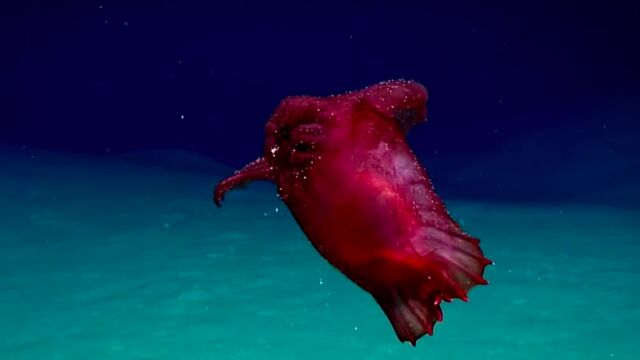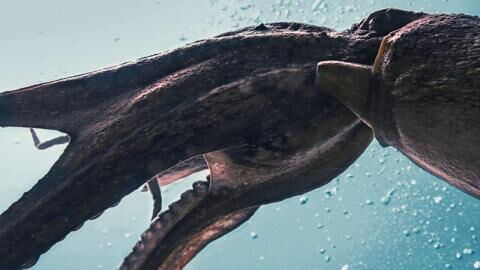Less than a year ago, an expedition from the National Oceanic and Atmospheric Administration (NOAA) was filming, with the help of a submarine, a purple creature swimming in the deep waters of the Gulf of Mexico. Despite its appearance of a 'headless chicken', the specimen appeared surprisingly graceful, floating in the waters, its translucent body undulating.This strange specimen was actually a sea cucumber belonging to the species Enypniastes Eximia. An abyssal animal feeding on sediment, but also able to move on the ground using its collar and appendages that similar to small octopus tentacles.
Discover our latest podcast
A special technology for filming the deep seabed
Another specimen of the same species was filmed in waters near Antarctica with an underwater camera developed by Australian researchers. The system used was originally developed for deep sea commercial fishing.
'We needed something that we could launch from the boat and that would continue to operate despite the great pressures and complete darkness, and for a long time,' says Dirk Welsford, leader of AADP (Australian Antarctic Division Program), who conducted the research. And the technology worked perfectly, since some of the images are absolutely breathtaking.
'Some of the footage we brought back is breathtaking, we even saw species we had never seen in this part of the world,' enthuses Dirk Welsford in a statement. Among them, the famous 'headless chicken monster'.
Important information on the protection of the seabed
On their images, we can see the sea cucumber floating, like a jellyfish, but also resting on the ground and progressing with its small appendages. The whole depth, more than three kilometers deep, was only illuminated by the lights of the camera. What was to be revealed once again was the incredible fauna that hides in the depths, but also in the waters of Antarctica.Thanks to this expedition, the Australian research team was able to gather information about the places that could support deep-sea fishing and those that, on the contrary, should be avoided. The results will be presented to the Commission for the Conservation of Antarctic Marine Living Resources (CCAMLR), which began to be studied on Monday in Hobart.The Australian representative to this commission confirmed that her country would again take the lead of a delegation calling for the creation of a protected marine reserve in eastern Antarctica.
'There is an incredible abundance and variety of marine life in the Antarctic Ocean, including species valued for commercial value, and their fisheries must be carefully managed for future generations,' concludes Gillian Slocum, the Australian representative for Australia for the Commission.














